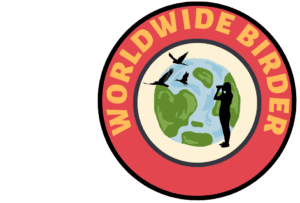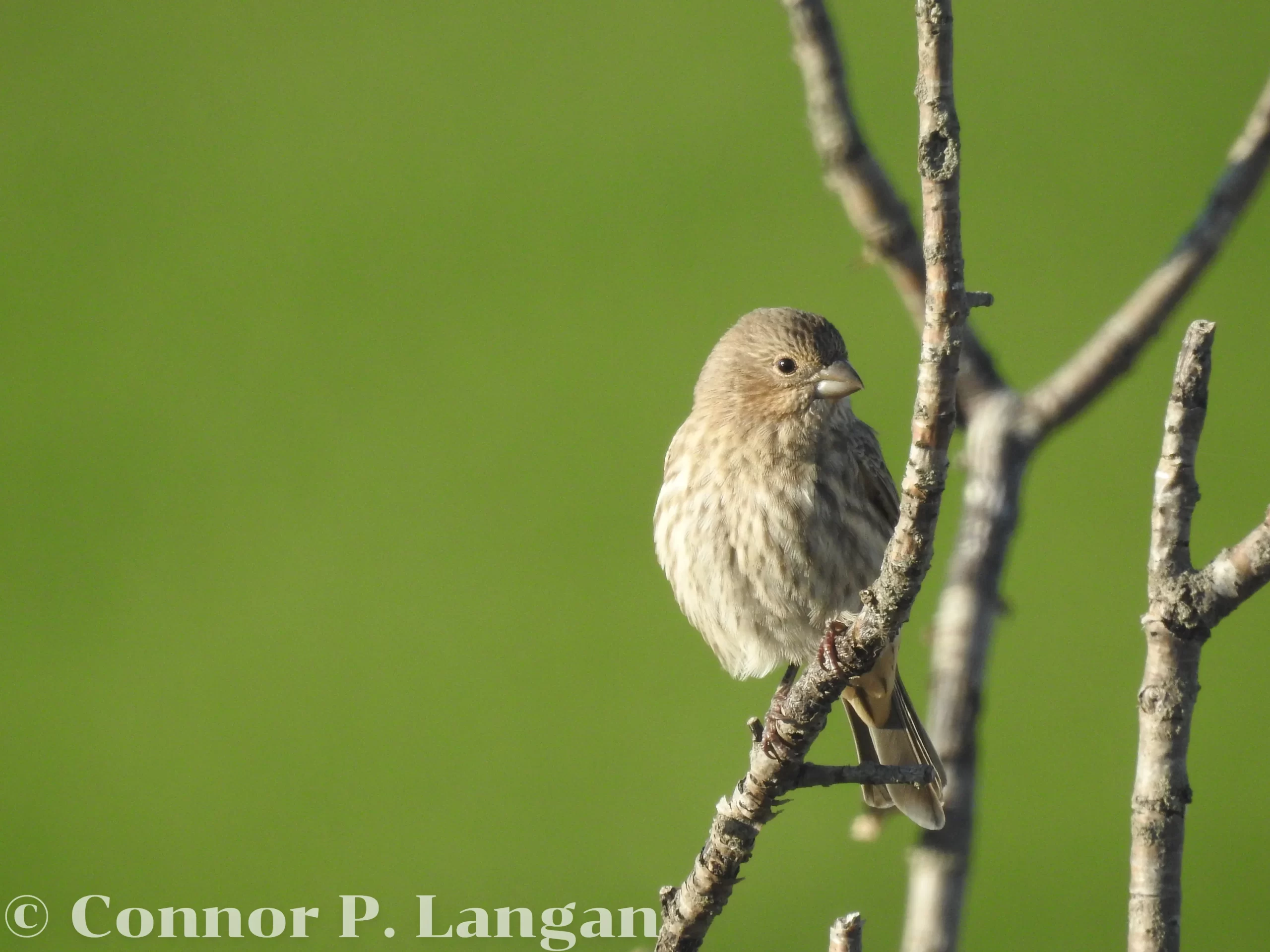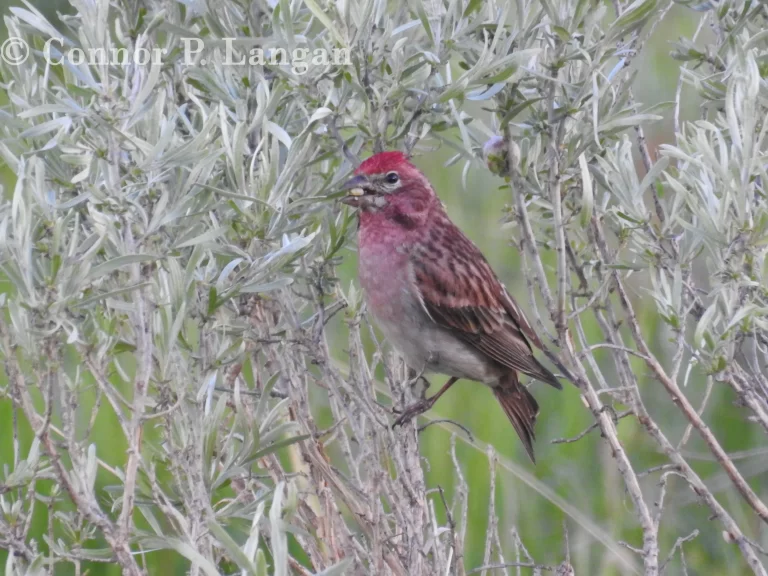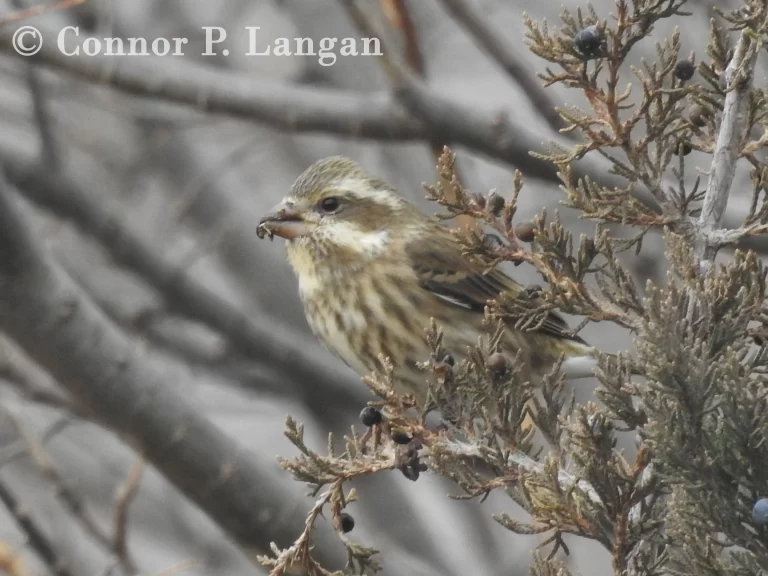Description
House Finches are fairly small finches with conical beaks and large heads. All finches have a notch in their tails, but the notch in the tail of a House Finch is subtle.
Measuring between 5 and 5.5 inches, House Finches weigh anywhere from 0.6 to 0.9 ounces.
Adult male House Finches typically have a pale red coloration around their heads and chests, though this color is dictated by their diet. If a male House Finch eats a diet of items that contain few carotenoids, their heads and chests may instead be a yellow or orange color. Males have pale, streaked stomachs and brown backs and wings.
Female House Finches are a drab brown color overall. Females have plain faces, pale undersides streaked with brown, and brown backs and wings.
Immature House Finches look similar to adult female House Finches.
Behavior
House Finches are accustomed to living among humans, so these birds often seem tame compared to other bird species that may visit a backyard.
Like many finch species, House Finches are gregarious. These birds are rarely found alone during the nonbreeding season.
Diet
These finches have a notable diet in that they rarely eat anything that is not derived from a plant. Oftentimes adult birds may consume plant materials but feed insects or other protein to their young, but this is not the case with House Finches.
House Finches of all ages consume seeds, fruits, and tree buds. When these birds visit bird feeders, backyard birders often observe that House Finches love to eat black oil sunflower seeds.
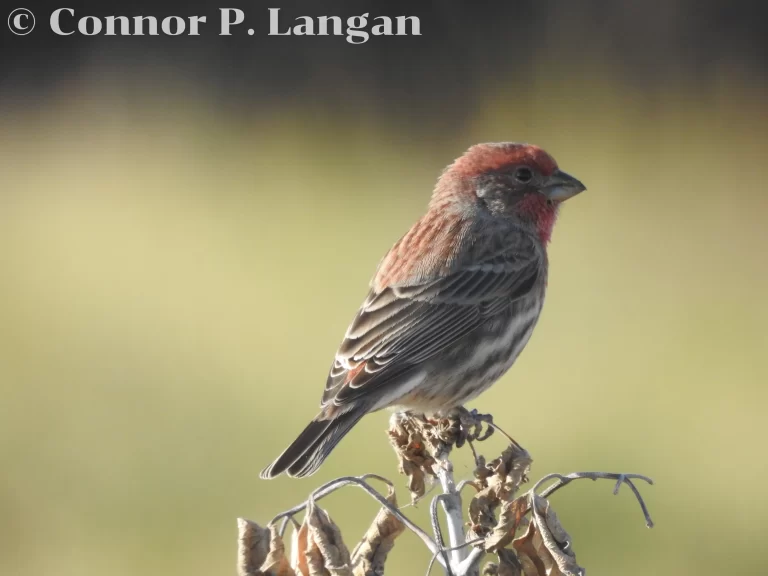
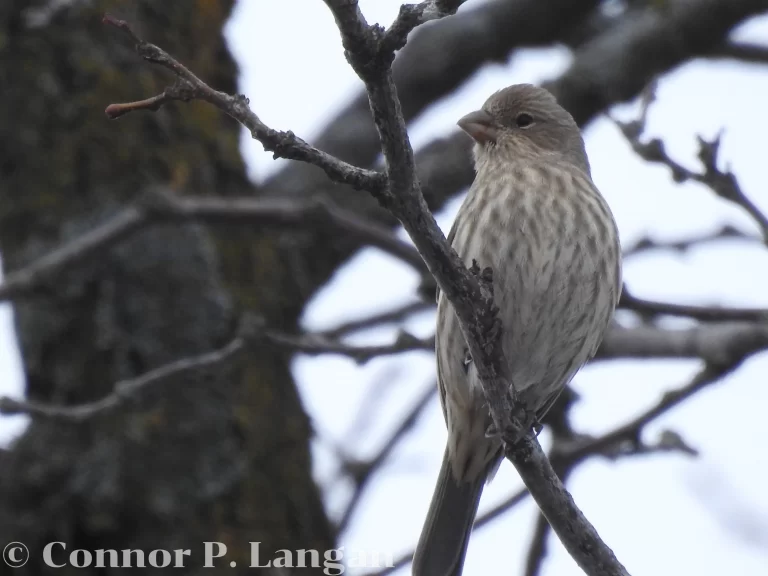
Habitat
This species is quite adaptable, being found in human-dominated landscapes but also thriving in deserts, clearings in coniferous forests, and riparian corridors. These birds will seemingly travel to any location in which food is available. House Finches are year-round residents throughout their range.
Range
House Finches are native west of the Great Plains in the United States. This species was introduced into New York City less than 100 years ago, and it has quickly spread throughout most of the United States.
Therefore, this species is not considered to be native east of the Great Plains in the United States, but it does not seem to cause much ecological damage.
House Finches are native to most of Mexico, while they may be found in southwestern Canada and now southeastern Canada after their introduction to New York City.
Breeding
These finches are monogamous by nature, with males courting a female with a display that often culminates in a male feeding regurgitated food to a female.
Both male and female House Finches may participate in the nest construction. House Finches are not choosy when it comes to selecting a nesting location, as these birds will build a nest in both coniferous and deciduous trees, rocky outcroppings, hanging plant baskets, shrubs, and human structures.
House Finches infrequently reuse nests that other birds are no longer using, but they more commonly construct their own nest. A House Finch nest is a cup-shaped structure made of twigs, grasses, and plant fibers. The interior of the nest is lined with soft materials such as fur, feathers, or garbage that the birds collect.
House Finches have the capacity to lay an extraordinary amount of broods each year, with females laying eggs up to 6 times. Each clutch of eggs contains between 2 to 6 eggs, with eggs being incubated for about 2 weeks. Nestlings take awhile to develop, staying in the nest for up to 19 days. Males and females feed the young.
Backyard Birding
House Finches are a common sight for backyard birders across much of North America. These finches will readily visit bird feeders where they may feed at the feeder or on the ground. House Finches are rarely by themselves, as large groups may converge on bird feeders and quickly deplete seeds.
If you wish to host nesting House Finches, hang baskets of plants near your house or grow small conifers and these birds will likely make a home in your yard.
Population Status
House Finch numbers have declined slightly in the last half-century, but overall this species is doing well, with a population in excess of 40 million birds.
